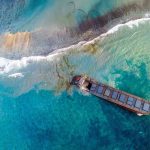The team announced that they have open sourced the MarineTraffic AIS density maps toolbox, which consists of a set of modules designed to process AIS data and enhance its transformation into actionable visualizations, such as density maps. The code is written in Python for simplicity and ease of use.
From the outset, MarineTraffic has been developed as a community project, initially relying on volunteers with an interest in shipping and the sea to host AIS receivers in ports and coastal areas. The MarineTraffic AIS Network has since expanded globally, now comprising over 5,000 active AIS receiving stations in more than 180 countries.
MarineTraffic continues to operate as a community initiative, facilitating the sharing of AIS data, vessel photographs, voyage information, and more. In support of this community, they are making a free AIS processing tool available under a Creative Commons license (CC BY-NC-SA 4.0).
The MarineTraffic AIS density maps toolbox provides a comprehensive view of vessel traffic by offering insights into vessel behavior on a regional or global scale within a specified timeframe. This product is one of the most popular offerings from MarineTraffic.
Preparing the underlying data for visualization is one of the most challenging tasks in data science, as inaccuracies due to sensor noise can lead to erroneous interpretations. While some errors may be acceptable for specific use cases, others can result in misleading visualizations. To simplify the process from AIS data to density maps, the MarineTraffic AIS toolbox has been released, which includes several modules.
Modules
AIS Cleaning Module: This module addresses the inherent inaccuracies in trajectories caused by sensor noise. It employs algorithmic techniques to smooth the data and reduce measurement errors. Additionally, it features data reduction techniques aimed at minimizing dataset size without significantly sacrificing precision. Various filters are applied to remove empty fields, invalid movement data, and other inaccuracies based on user-defined parameters.
Density Maps Module: The term “vessel density” can have multiple interpretations. It can refer to the average number of vessels detected in a specific area over a timeframe, the average number of crossings in that area, or the total vessel presence time within that area. The methods for creating density maps vary depending on the definition used, including calculations based on detected vessel positions and tracks. In this context, vessel density refers to total presence time, with AIS data being the most commonly used dataset for generating density maps.
The team expressed pride in their hard work and hopes that the community will benefit from the toolbox, contribute to its improvement, and explore possibilities they haven’t yet imagined. They encouraged interested users to access the code and documentation on GitHub and expressed eagerness to see how others utilize the MarineTraffic Toolbox, welcoming feedback and comments.





